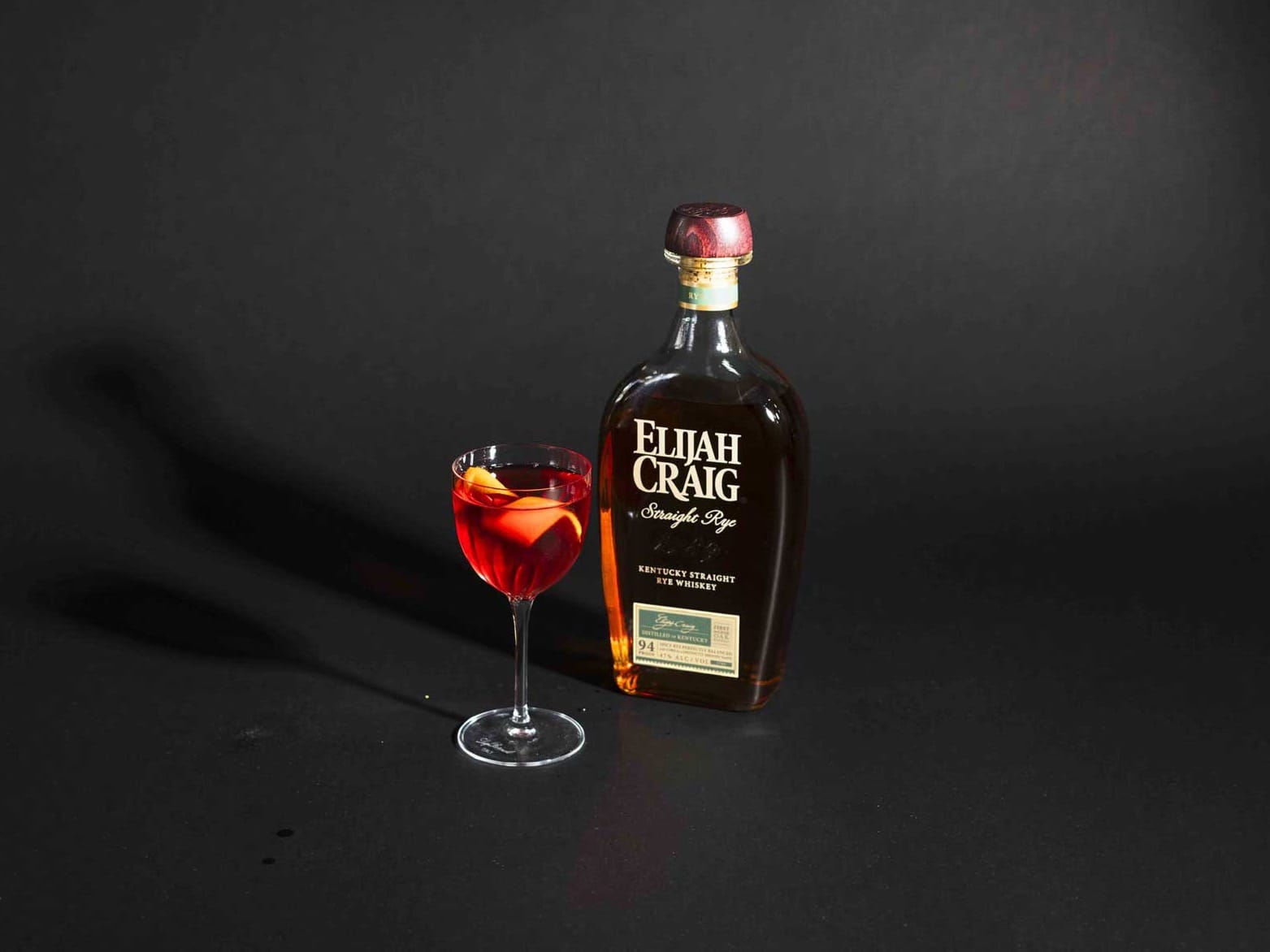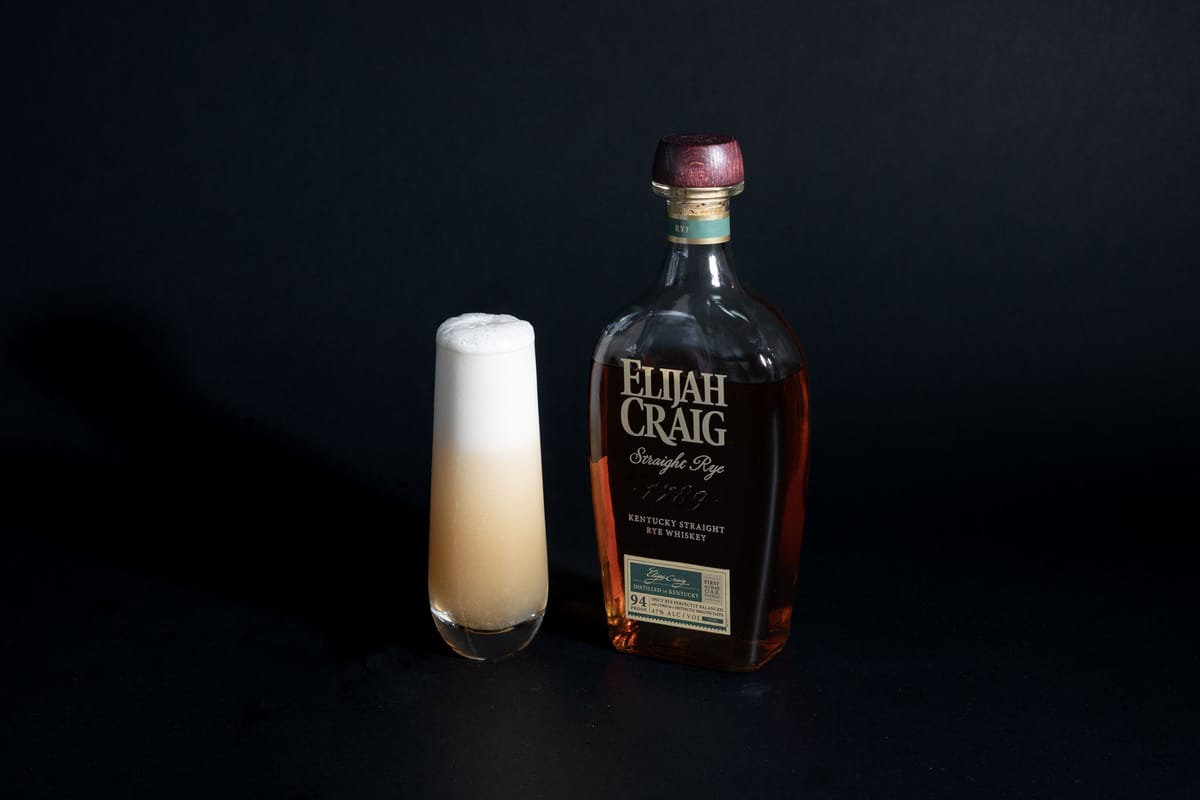Who invented the Old Pal cocktail?
How you make it depends on which version of history you believe.

What exactly is an Old Pal cocktail? Search online, and you’ll find that the drink’s creator is one Harry MacElhone, of Harry’s New York Bar in Paris back in the 1920s.
Pretty definitive, right? Well, maybe.
The Old Pal isn’t in Harry’s 1923 cocktail book, Harry of Ciro’s ABC of Mixing Cocktails. But it is found in the 1930 (and ninth) edition of that book. It’s there as recipe number 208, and calling for 1/3 Canadian Club Whiskey, 1/3 French Vermouth, and 1/3 Campari.
But under the recipe comes the credit: Recipe by “Sparrow” Robertson, Sporting of the New York Herald, Paris. The drink’s not from Harry. More on Sparrow in a moment.
That’s not the first time the Old Pal cocktail appears in a Harry MacElhone book. The drink first gets a run in print a few years earlier, in 1927, in Harry’s book, Cocktails & Barflies. That book offers a detailed — if fanciful — picture of American bar drinking in Paris in the 1920s, thanks to contributions by American editor Arthur Moss.
The Old Pal. Video: Boothby
You won’t find the recipes for the Old Pal — nor its sibling, the Boulevardier — in the cocktail section of the book. They’re instead found in the Moss’ appendix at the back, in a section called Cocktails Round Town, where he describes a series of drinks created by the barflies of Paris.
The Boulevardier was created, Moss writes, by Erskinne Gwynne — which is about as 1920s a name you’ll ever come across — a socialite who owned The Boulevardier magazine.
And it’s also in this section that you’ll find the Old Pal — essentially the same drink as the Boulevardier, but with rye whiskey — Canadian, in this instance — in place of the bourbon.
‘I remember way back in 1878, on the 30th of February to be exact, when the Writer was discussing this subject with my old pal “Sparrow” Robertson and he said to yours truly, “get away with that stuff, my old pal, here’s the drink I invented when I fired the pistol the first time at the old Powderhall races and you can’t go wrong if you put a bet down on 1/3 Canadian Club, 1/3 Eyetalian Vermouth, and 1/3 Campari,” and then told the Writer that he would dedicate this cocktail to me and call it, My Old Pal.’
Keen observers would note that there’s a key difference between the two recipes above: the choice of vermouth.
If you ask me, it’s best to choose sweet vermouth — or, Italian (or the eye-roll inducing 'Eyetalian') vermouth — over the drier French vermouth of the later recipe. The internet is littered with fixes to make the dry vermouth version of the drink taste palatable, but the sweet vermouth version? Delicious as it is. Yes, it is essentially a Boulevardier made with rye, but it is a superior drink.
And don’t just trust me on this — it’s the version the bartenders at The Everleigh will opt for, as Michael & Zara Madrusan’s excellent book, A Spot At The Bar, suggests.
(I don’t know what Canadian Club tasted like back in the 1930s, but these days it’s far from an identifiably rye whiskey. Better to go further south, and pick an American rye with that characteristic spicy note which plays so well with sweet vermouth and Campari.)
It’s worth noting that in both examples, the drink is credited to Sparrow Robertson, and not claimed by MacElhone — although, as with all tales told at the bar, you might not be too sure about it.
But who was this Sparrow character? Well, he might just be the greatest barfly of all time — better than even Hemingway.
As this essay explains, “The most famous American reporter in Paris before the war was not Hemingway or Shirer but the Herald’s sports and gossip columnist, a tiny fellow named William “Sparrow” Robertson.”
The Sporting Editor for the New York Herald was not someone whose beat included anything we think of as sport, by the way. It was more of a gossip column, reporting on the comings and goings of the American expat set in Paris.
And Sparrow was well equipped to do the job. The five-foot-two New Yorker was well known in the bars and hotels of Paris, and an obituary after his death in 1941 declared that “his headquarters were the thirst emporiums of the Right Bank.” So dedicated to his beat was he, that Sparrow continued to file his column every day after the Nazi occupation of Paris began and the newspaper paused publishing in 1940. Despite having lived in Paris for 20 years, he spoke almost no French.
‘“The champion drink-cadger of Paris,’ the obituary notes, ‘the Sparrow, after a whole night’s expensive buying by his pals, would say: “No, pals, this one’s on me,” and order up a round of demi-blondes. He almost never ate any food except the hard-boiled eggs he would swipe from bars.”’
Ingredients
- 30ml Elijah Craig Rye
- 30ml sweet vermouth
- 30ml Campari
Method
Stir all ingredients with ice in a mixing glass until very cold. Strain into a chilled glass. Garnish with an orange twist.





